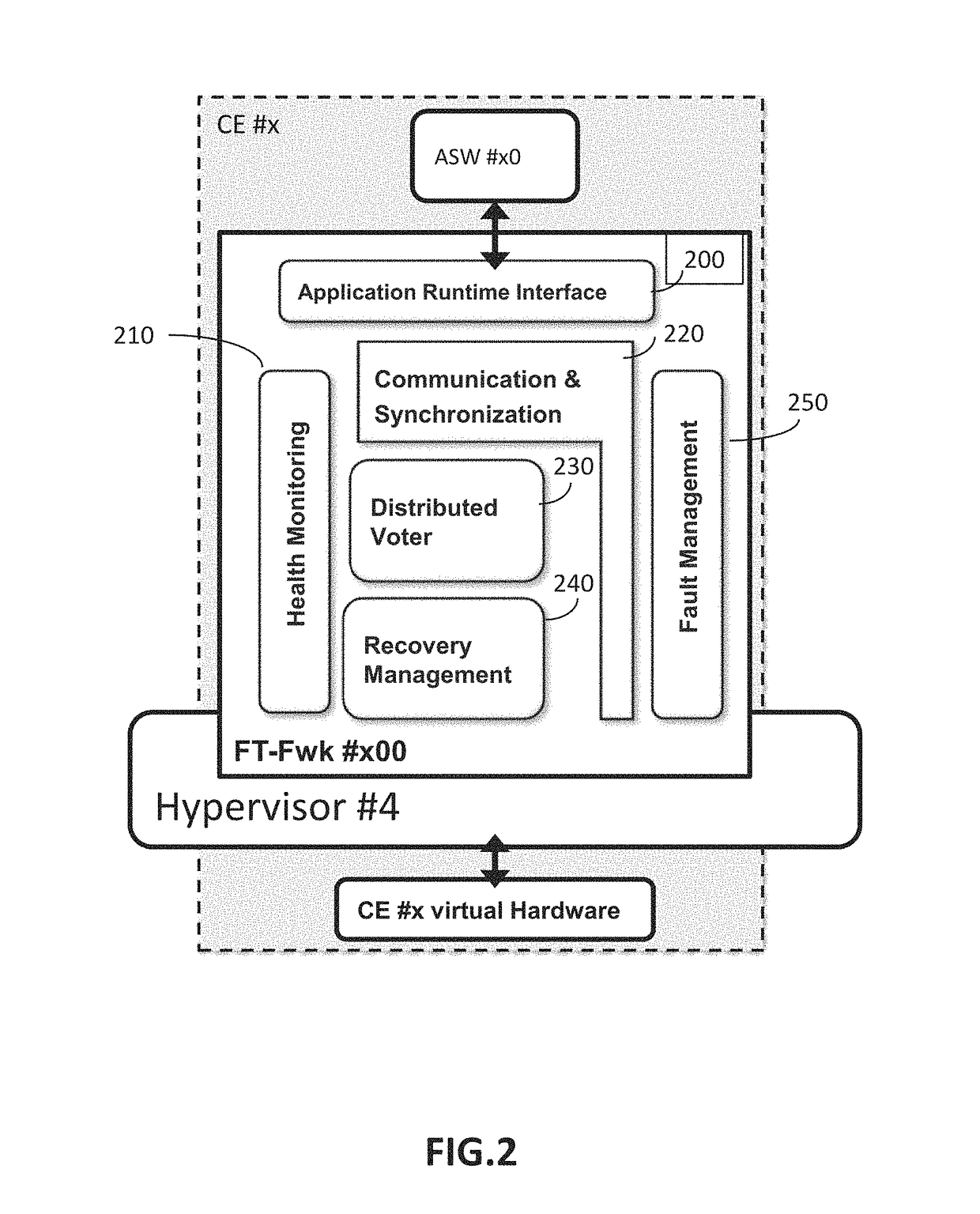Triple software redundancy fault tolerant framework architecture
a software redundancy and framework architecture technology, applied in the field of digital data processing, can solve the problems of reducing the performance of commercial high-performance technologies, reducing consuming commercial high-performance technologies, so as to reduce the size and weight of satellites, optimize the “size, weight and power” trade-off, and improve the performance/power consumption ratio. effect of hardware on-board size and weigh
- Summary
- Abstract
- Description
- Claims
- Application Information
AI Technical Summary
Benefits of technology
Problems solved by technology
Method used
Image
Examples
Embodiment Construction
[0053]The following acronyms are used: Commercial Off-The-Shelf (COTS); Single Event Upset (SEU); Single Event Functional Interrupts (SEFI); Triple Modular Redundancy (TMR); Application software (ASW); Computing Elements (CE); Computing Platform (CP); Triple Software Redundancy (TSwR); Fault Tolerant Framework architecture (FT-Fwk); Payload Data Unit (PDU).
[0054]An Single Event Upset (SEU) event corresponds to a change in a state of a bit (an elementary item of information) inside the processor caused by a particle, for example a heavy ion.
[0055]A Single Event Functional Interrupts (SEFI) event corresponds to a locking state of the processor. This event can be a direct consequence of a Single Event Upset (SEU) event which has brought about a change in behaviour of the processor.
[0056]A Computing Platform (CP) is a hardware machine which comprises installed on the COTS multi-core processor, memory units (e.g. RAM-based, EEPROM or PROM) and data input / output (I / O) interfaces (e.g. Eth...
PUM
 Login to View More
Login to View More Abstract
Description
Claims
Application Information
 Login to View More
Login to View More - R&D
- Intellectual Property
- Life Sciences
- Materials
- Tech Scout
- Unparalleled Data Quality
- Higher Quality Content
- 60% Fewer Hallucinations
Browse by: Latest US Patents, China's latest patents, Technical Efficacy Thesaurus, Application Domain, Technology Topic, Popular Technical Reports.
© 2025 PatSnap. All rights reserved.Legal|Privacy policy|Modern Slavery Act Transparency Statement|Sitemap|About US| Contact US: help@patsnap.com



